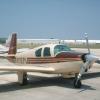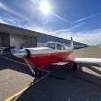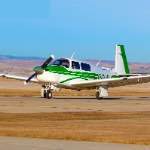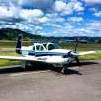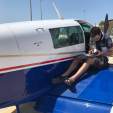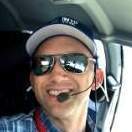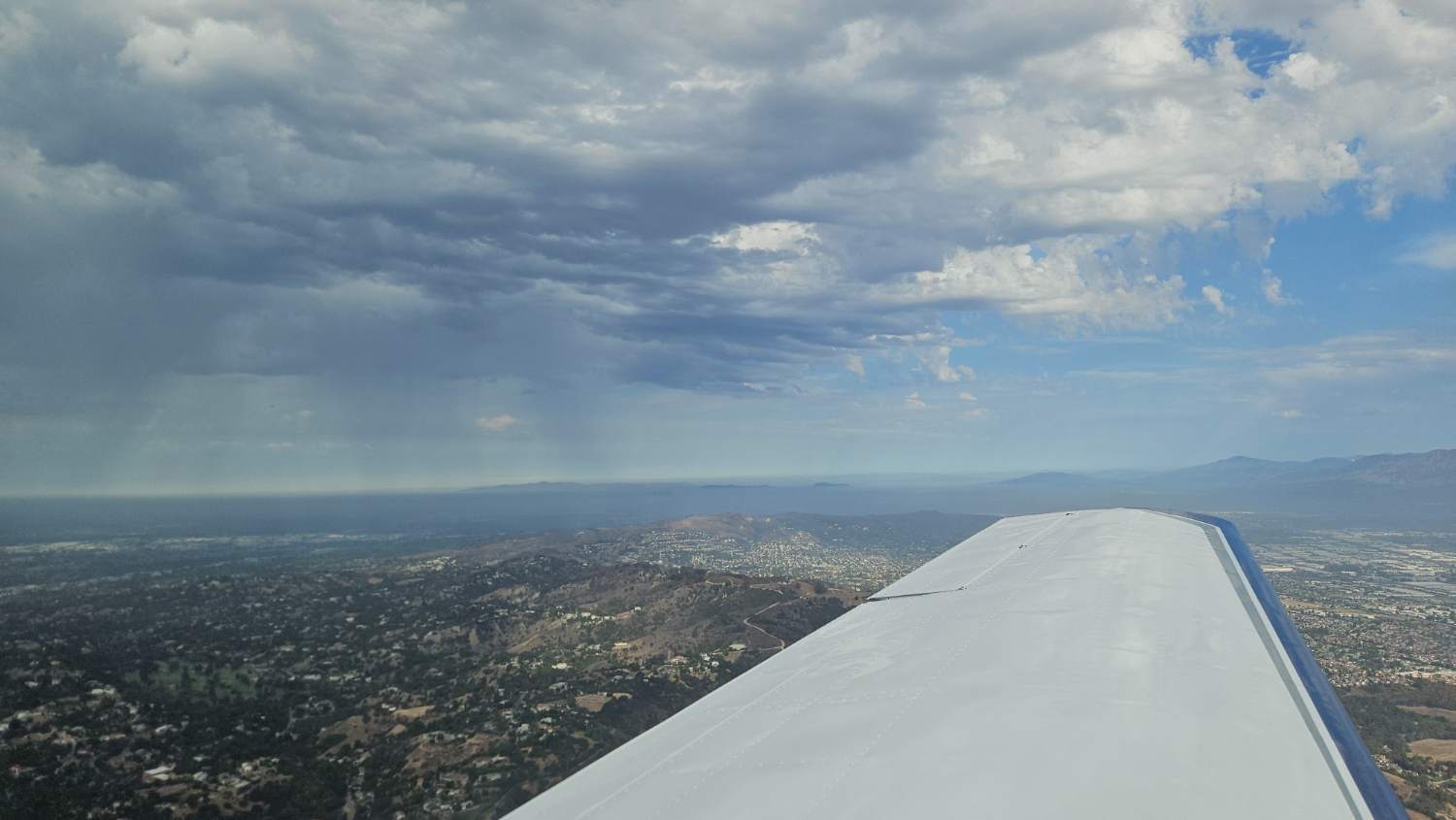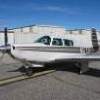All Activity
- Today
-
Traditionally, Lycoming did not produce maintenance manuals and instead provided maintenance information in service letters, instructions, and bulletins. Recently, it has begun producing maintenance manuals for some engines. There does not appear to be a maintenance manual for a TIO-540 https://www.lycoming.com/sites/default/files/attachments/SL-L114BJ_Technical_Publications.pdf.pdf
-
Its as old as the plane for sure and so is your rubber manifold pressure line under the panel. If you have a rubber fuel pressure line under the panel it might need a look see also.
-
Ya that coincides with when I was out of the country and not online at all BTW try it sometime-go off line for a few days- peace and quiet!
-
I use it all the time. 1/2 quart into the oil for a 1-hour flight before every oil change.
-
Never in an airplane, but I have used it successfully in automobiles. A cup of mineral spirits will work just as good.
-
A couple of years ago, I noticed the compression on one cylinder on my Lycoming IO-360-A3B6 was trending downward on successive measurements from 78 to 74 to 68. I added Marvel Mystery Oil to the fuel for a couple of tanks and the next time I checked the compression, it was 76. Might have been a coincidence. Recently, I had a cylinder drop out immediately after cold engine start. It happened again the next day. Maybe a valve beginning to stick? I added Marvel Mystery Oil to the fuel for one tank full and haven't had the problem since. Again, it might have been a coincidence. A local mechanic swears that it makes a great ring flush. Supposedly a lot of DC-3 operators used it to prevent valve sticking in R-1830s back in the day. The mechanic at a museum where I used to volunteer told me that back when the FAA operated several DC-3s as flight check airplanes a mechanic that serviced them told him that it was used it in these planes for the same reason. Apparently they bought it it 55 gallon drums. What's in the stuff? I've attached the SDS. It's Petroleum distillates, hydrotreated light (solvent), Methyl salicylate (wintergreen fragrance), TCP, and two isomers of Dichlorobenzene. TCP is a known lead scavenger. Some searching shows that dichlorobenzene might soften carbon and varnish deposits. So, theoretically it might be beneficial. I don't know, but I'm curious what others have experienced. MM12R_50094_MM13R_50095_MM13RC_Marvel_Mystery_Oil_SDS_US_031424_FINAL.pdf
-
I guess I’m the outlier here. I still use Meguiars Gold Class automotive liquid wax. Works amazing and the water continues to bead after 6mo / 5 washes. It’s so cheap, I’ll continue to use it.
-
Thanks. I might give this a try. At worst, I will be out of $50 or so and some elbow grease.
-
Matthew P started following Weep No More Info
-
For those of you that are waiting for your slot with Paul at Weep No More, it's well worth the wait...Just picked up my aircraft from Paul this morning couple of things to consider if you make the trip and decide to fly back on a commercial airline. Wilmar is about a 2hr drive from Minn/St Paul airport, Paul introduced me to Geri (320) 979-8818 and she took me to the airport and picked me up 2 weeks later, very nice individual and cheaper than Lyft or Uber, IF you can get anyone. She also has rooms for rent that are very reasonable, and if you chose to stay at a hotel, the Super 8 is reasonable and actually really nice rooms, just DON'T take the rooms next to the stairs..made that mistake. I know Paul has a long wait list, but he does have cancellations, he booked me 18 months out but had a last minute cancellation and texted me to see if I could make the short suspense to get there so overall, I waited 6 months. He gave me a quote, stuck to it completed the job when he said it would be done for LESS than the others charge..now I can look at getting it painted. Also, Paul is co-owner of the MSC there on the airfield so if there is other work you need taken care of, just ask him about it.
-
- 2
-

-
About 12-18 months for reapplication depending on exposure. Nothing in between. I use waterless cleaner about three times a year, the belly about eight times a year. The first time I used it, I did my own cut and buff. I didn’t really try to get every swirl or imperfection out. I did hit scratches and oxidized areas. This product applies like rain-x. It has a slight haze that you wipe on, and then off a few minutes later when dry, with little effort. Water beads like fresh wax, bugs come off easier and it seems to attract less dust/dirt via static cling. It just seems to stay cleaner and be easier to clean.
-
Thanks for the pirep. Empirical evidenc from user is better than reviews of unknwon origin. How often do you reapply this and what products do you usually use in between applications to wash the plane?
-
https://planeperfect.us/products/clear-coat-finishing-spray-reload this is what I usually buy. They have changed the configuration. it used to be two of these small bottles for $35. Looks like it’s $20 a bottle now. each bottle will do two planes, or a plane and a car if you can do them at the same time. the solution cures in a few days in the bottle, once mixed, and becomes un-useable. between the price and the ease of use, I feel like it’s a great value.
- Yesterday
-
Plane Perfect makes a number of products. Which one are you referring to? https://planeperfect.us/collections/exterior
-
I understand there are lot of these that are generated on-the-fly and used behind scenes for "auto-land" equipped aircraft, they support 3D path and you get en-route NAV with en-route VNAV followed by LNAV+V on short final, including to non-precision runways ! Obviously, for auto-land the algorithm is more likely to stay out of challenging places like Aspen or Bravo airports The "Visual Approch" are generated on-the-fly and checked against database obstacles otherwise you don't get +V It seems "Visual Guided Approch" are somehow pre-coded in database (rather than generated on-the-fly), maybe they involve some quality checks or flight validation? I hope people understand that these need visual approach conditions? The naming convention are confusing, it's awful: they look like proper plates GPS RNP procedures, except "G" being added? I wonder what kind of checks are done on glide from "Visual Guided App" against airspace or terrain? and if some of the segments implement "radius to fix" legs? does "Visual Guided App" require up to date terrain and obstacle database? or valid terrain and obstacles data?
-
Back when the first GPS came out, I *believe* you could only shoot the Approach if it actually said VOR (GPS) in the title (that's the way we were taught and what was told in all the FAA seminars I attended). You've zeroed in on some changes over the years and pointed out you're good to shoot the approach using the GPS as your primary source IF the VOR is being MONITORED. You can't just have a VOR in the plane.
-
Plane perfect is a product I have been using for several years. It is 35 bucks a batch which realistically could do my Mooney twice. however, once you mix it you have limited time to use it before it crystallizes in the bottle. it’s basically wipe on, wipe off, no real effort and produces fantastic results. I don’t know what it is, what is in it, or how it works.. what I can tell you is once the plane is clean it takes about 30 minutes to apply, and the water beads off like fresh rain-x for about a year or so. it won’t address paint corrections or swirls and scratches, but I guarantee it will move your paints appearance by several degrees at a minimum , regardless of the condition. I have no financial interest or connection to the product. I only know that I am thrilled with the cost to value.
-
@IvanP I couldn't agree more with your post. I'm getting old enough to be pretty cynical about 'miracle' coatings having seen many different 'miracles' touted over the decades I've been detailing my vehicles. Frankly, like getting a good paint job in the first place, it's the quality of surface preparation that results in a superior finished look. As far as longevity, I've had the best luck with hand applied pastes/waxes vs. 'spray on' or thin/watery 'coatings' IMHO, longevity is largely/mostly a result of coating thickness, more than what 'miracle' material is employed. Sure, technology has improved UV resistance, but thickness matters
-
Needed to get a flight in today to keep my streak going for flying every week. Today was week 49, just three more to go to hit my goal of 52 weeks. Short hop from FUL to POC for some breakfast in between some small cells pushing through the area.
-
OK, maybe it isn't what you were expecting but it is still accurately described. Glad I was in a car... Coincidentally I took the Piper rental up to Great Barrington, MA today. Great Bearington... Ha....
-
- 2
-

-
It would be interesting to see some peer-reviewed articles in reputable scientific publications ragarding the science behind these various coating products, ragarless of whether we call them ceramic, polymer, or something else. Cursory search does not really bring up anything but various blogs and websites that try to sell consumer on their products, many containg dubious claims about protective properties of these products, e.g., "ceramic" coating will prevent rock chips and scratches v. polymer coatings will not, etc. (I do not think that either product will prevent the paint from being damaged when you get a rock flying at you at 70mph on the highway). Interestingly, none of the articles that I was able to find expressed any concerns about the underlying paint, except for the common sense preparation of teh surface prior to aplication. What I saw were broad claims that appear to apply to all paints equally, regardless of the many differences between various paint systems used on aircraft and automobiles.. Installer and seller sites typically do not mention anything about the different paints. Do these magical products bond to all paints equally and form an impenetrable shield against elements or are we just being sold a very expensive snake oil? I tried some high-end waxes on my cars in the past, but the differences between wax/polish systems in the $50-100 range and the expensive stuff around $500 or more did not seem to be significant. These "ceramic" coating products have been on the market for a while now. I am curious why do car manufacturers not apply these on factory new cars - if it is such a magic bullet, having that as an option could be worth it.
-
Paul Bertorelli on the state of aviation journalism
1980Mooney replied to toto's topic in Miscellaneous Aviation Talk
More flashy pictures of "Destinations". Both former Aviation Safety and IFR (discontinued and "consolidated into" the Flying edition) have been dumbed down to 2 pages each comprised of 3 print columns each when you exclude the pictures. I would say that the articles are becoming more like "a mile wide and an inch deep". Look at the latest August issue: Aviation Safety article - "Diverting From The Plan" - 1/2 page is devoted to "Automation makes this a lot easier" IFR - "Single Engine Risks" - 3 print columns "touches on" night, mountain, IMC, weather, ATC... Key takeaway - "altitude is your best friend (except if you are on fire...)" And the last paragraph "Wrapping Up" is "Consider loading up the right seat with a pilot pal who can constantly scan for suitable areas for putting the aircraft down while you fly."... Duh. But then isn't all of aviation becoming this? More and more data integration and automation like the latest Dynamic Procedures from Garmin and Foreflight. It is all designed to create more "situational awareness". True it does - but it can also make pilots more lazy and dependent upon automation. Why wrack your brain visualizing how everything is laid out or should line up. Why spend much time briefing for a flight any more? These automated/integrated avionics and tablets will deliver everything you need. Just follow the magenta line.... -
Today coming back from Portland (Troutdale) I was about 202 knots then I increased power and got up to 213 knots. at 11,500' MSL
-
mooney_flyer started following What power setting do you use?
-
BAS is parting out Bravo with the newer fiberglass interior, unique opportunity to buy all the parts in one shot, cant hurt to call them to see what is still there

